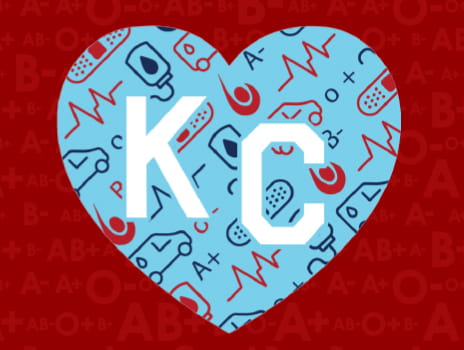January 18, 2023
They seem to never tire at the Community Blood Center, including the main office at 40th and Main streets in Kansas City, Missouri. So it was refreshing, a wake-up call, to hear them be so blunt.
They know many of us have grown tired of the message. Yet the message must land anyway.
“That happened just last week,” said Chelsey Smith, marketing manager at Community Blood Center. “We were running exceptionally low on O-negative. We put out a social media post. We sent out communications to our O-neg donors trying to get them in the door.”
This is the exhausting, never-ending world of keeping hospitals only days ahead in the blood-supply game. CBC operates community blood drives and neighborhood donor sites, takes and solicits appointments and constantly updates the public on blood needs.
A focused effort to increase donations
Lately, they wondered if, by the sheer number of times they’ve had to sound the alarm on blood shortages, it was all falling on deaf ears. So they came up with a new campaign called “GiveLifeKC,” asking the community to make the ask. If we’re the ones saying it’s time to step up and donate blood, maybe more of us will.
“It really is a community problem. A blood shortage impacts everybody,” Smith says. “Unfortunately, it’s a national blood shortage, too. We’re not the only region in the country dealing with this. The only way out is through donors. So we need people to come in. We need people to hear this message and shoulder this burden with us.”
Smith joined Sean Kumer, MD, a transplant surgeon for The University of Kansas Health System, on the January 9 edition of Morning Medical Update to promote Donor Awareness Month and the CBC’s GiveLifeKC campaign. Dr. Kumer is also vice president of perioperative and procedural services at the health system, and knows the ins and outs of surgery and blood transfusions.
I never knew this before I watched his interview, but Dr. Kumer said most surgeries don’t require blood transfusions. The ones that do – traumas, emergencies – are where preplanning goes out the window.
Continually managing blood supply
“It’s unbelievably stressful,” he said. “Those are not elective procedures. They show up when they show up. It’s always a 5-alarm fire. We try to keep it from being that, but there are all these unknowns.”
Our health system depends on the Community Blood Center to collect blood donations and deliver them to our blood bank on a regular basis. We prefer a 7- to 10-day supply, and that’s not always guaranteed. Especially right after the first of the year and in the summer months when donations are low.
By the time red blood cells, plasma or platelets (the 3 components used) arrive bedside, they’ve gone through a process of scanning, packaging and testing for contaminants at CBC, followed by more scans at the health system, more tagging and then delivery through a nifty tube system with double identification checks all along the way.
I also didn’t know this. Surgeons have options, what they call “bloodless medicine,” to limit how much blood patients need, thus decreasing demand on a stretched supply. Dr. Kumer says transplants once demanded large amounts of blood. Now, 55% of liver transplants, for example, performed at the health system require no transfusion. Wow.
The only way out of a blood shortage is through donors ... So, we need people to come in. We need people to hear this message and shoulder this burden with us. Chelsey Smith of the Community Blood Center
What a difference 1% would make
“Our hospital does an incredible job of being great blood stewards and certainly transfuse when necessary but also doing a bit of mitigation and practicing excellent surgical techniques to prevent that need for blood,” says Tori Tabory, RN, transfusion safety nursing specialist.
Here’s where the math gets interesting. Smith says about 3% of the population donates. If that became 4%, we’d wipe out blood shortages. Except there’s the expiration thing. Red blood cells last 42 days, platelets only 5 days. Plasma can be frozen and used up to a year later. It’s not like we can stockpile.
So it’s a constant ask, and both the Community Blood Center and healthcare professions could use your help to donate and tell your friends, family and neighbors to do the same.
Shoot for 3 ½%, anyone?
Find out more at SaveALifeNow.org.





